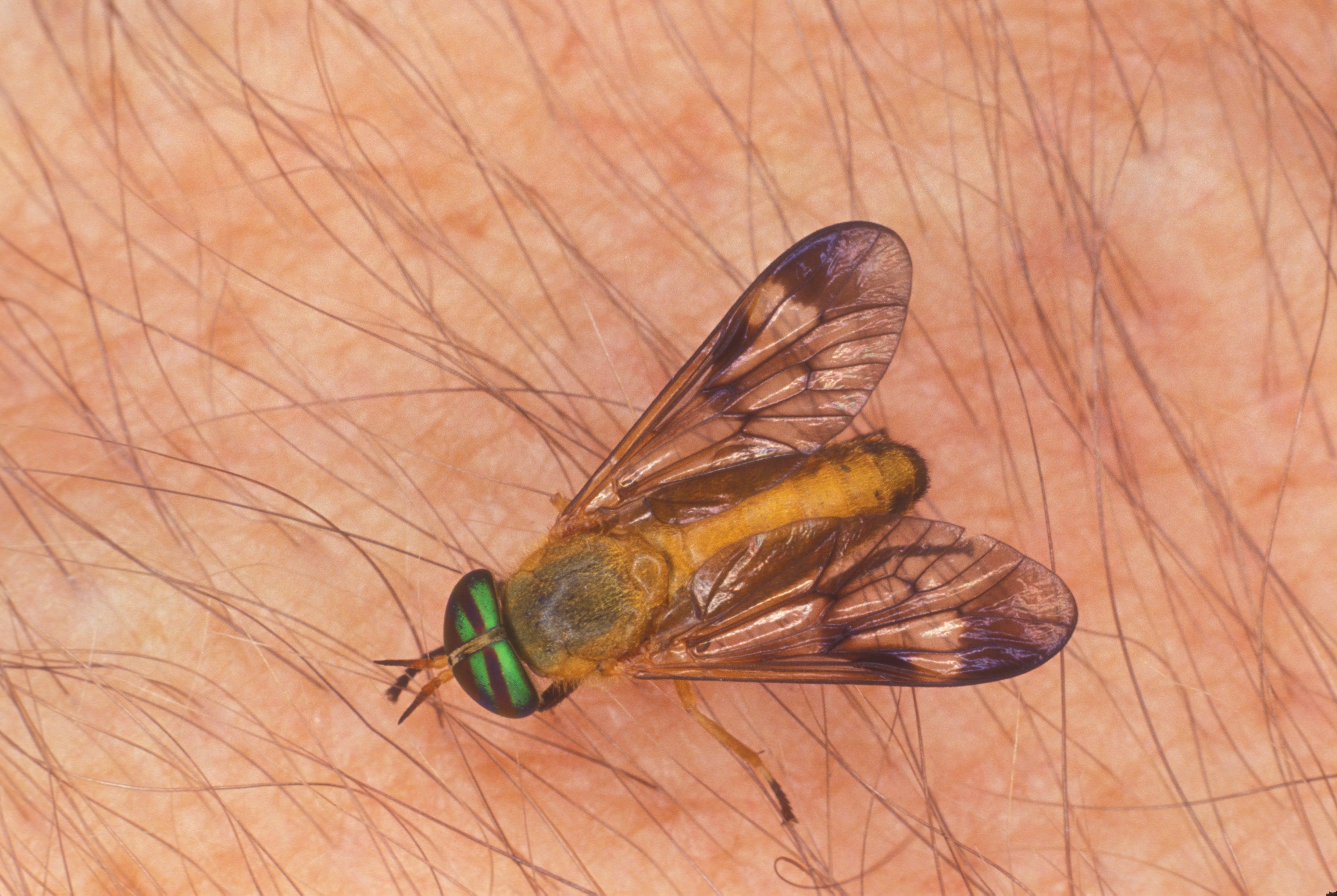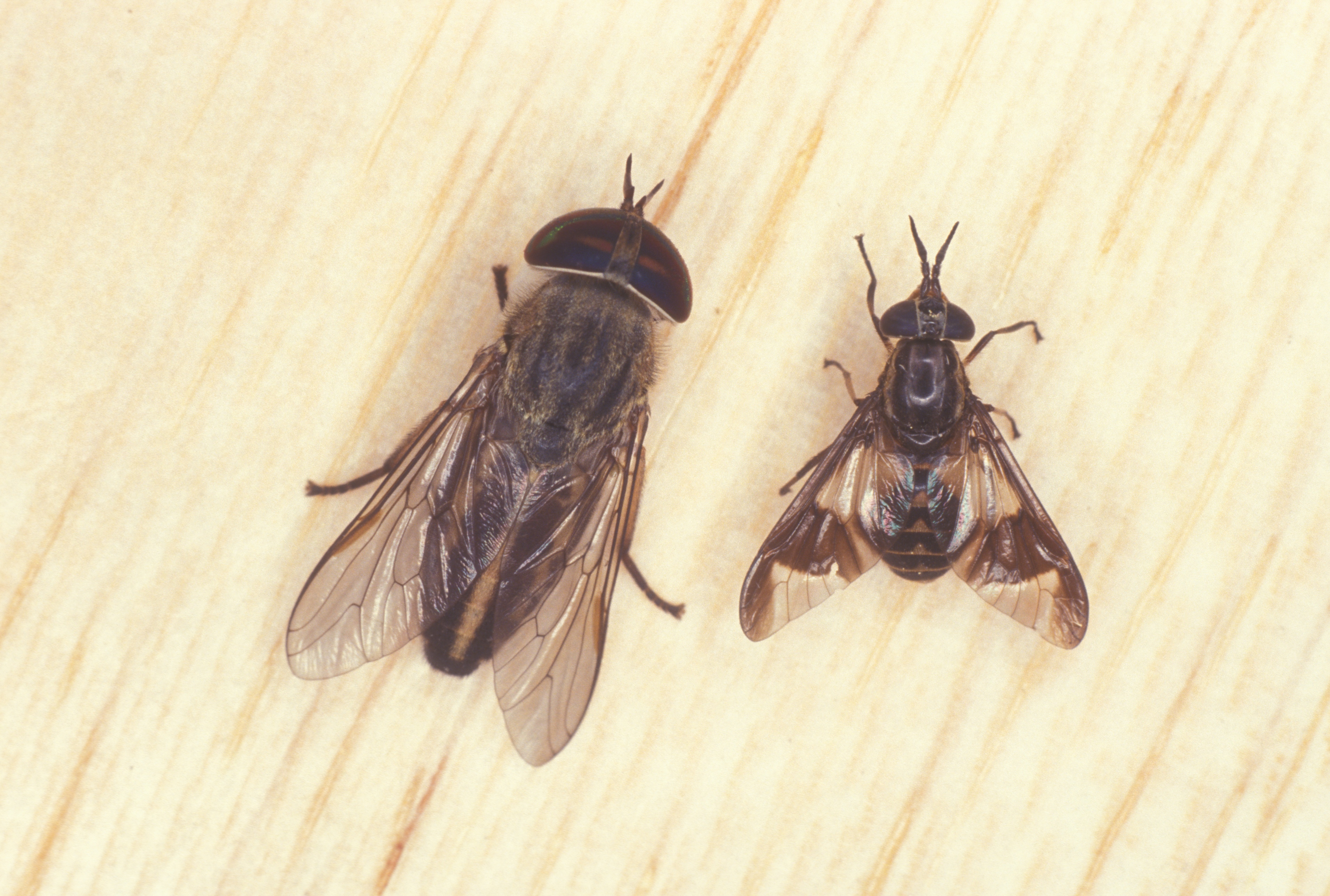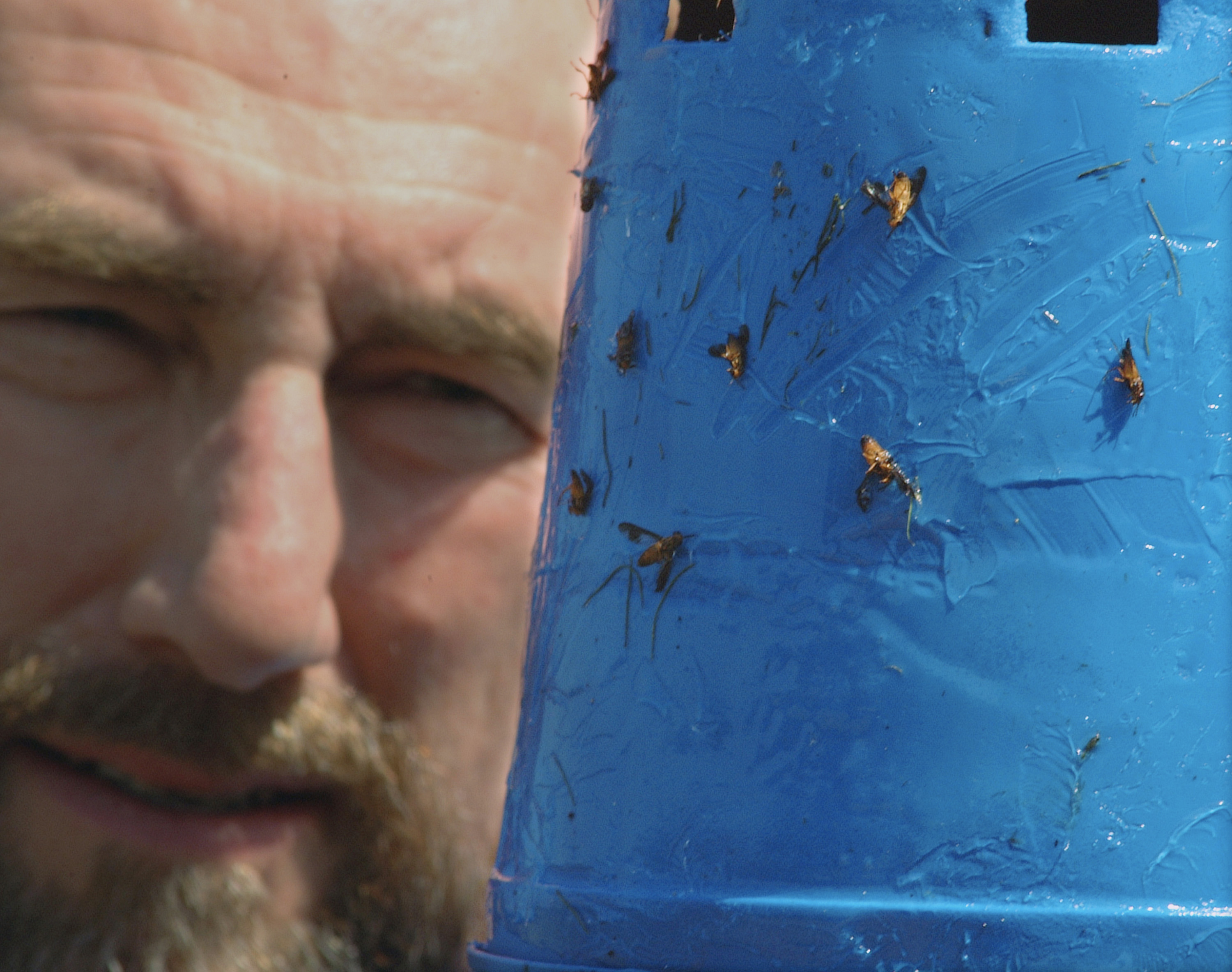The summer heat is here and with that comes the misfortune of yellow flies, deer flies and horse flies. If you’ve ever experienced their painful bite, you know they can certainly make outdoor work and recreation miserable. These biting flies belong to the insect family Tabanidae and are widely recognized as being economically important pests of humans, cattle and horses. Their populations increase May through September and you’ll find them most active during the daylight hours.
Yellow flies and deer flies range in length from 1/3″ to 4/10″ and closely resemble each other. Deer flies are yellow to black, have stripes on the abdomen and have dark patches on their wings. Yellow flies have the same body shape, are yellowish but have dark purple-black eyes with florescent green lines. Horse flies are slightly larger, about 4/10″ to 1” with green or black eyes and black to dark brown in color.
Similar to mosquitoes, the female fly is responsible for inflicting a bite. The males feed primarily on pollen and nectar. Females are daytime feeders and use their large scissor-like mouthparts to lacerate skin for a blood meal. During feeding, anticoagulants in the female’s saliva are injected into the skin, which increases blood flow and in some cases can cause allergic reactions.
Standing water and mucky areas, such as ponds and swamps, serve as breeding grounds for most species of biting flies. They have an aquatic or semi-aquatic immature life cycle that requires adequate moisture for development. Females lay eggs in masses on plants, rocks, sticks, vegetation or any other objects found over water. Five to seven days after hatching, the larvae begin to feed on decaying organic matter. The mature larvae migrate to drier soil and develop into pupae. The pupal stage is a non-feeding stage that lasts about two to three weeks and concludes with the emerging adult.
Unfortunately, controlling biting flies through source reduction and chemicals is difficult as they develop in natural areas where insecticide applications can be tricky. One method that can be effective in small-scale areas is the use of traps. Adults can be trapped using a big black ball or a blue plastic cup covered in glue. The traps should be hung about three to six feet above the ground and require wind movement for the attraction of flies.
The use of insect repellents can be helpful but not overly effective. A better prevention option is to wear protective clothing to reduce the likelihood of skin exposure to flies.
For more information on this topic, use the links to the following publications:
- Air Potato Leaf Beetles are Here to Help - February 3, 2022
- Chiggers - February 12, 2021
- Yellow flies, deer flies and horse flies, oh my! - June 7, 2019



